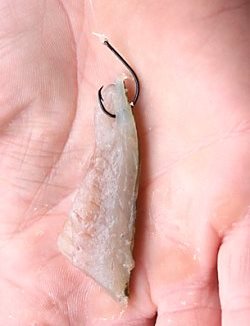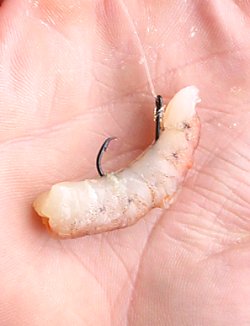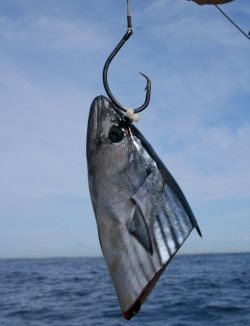Benefits of circle hooks
- Reduced deep hooking – improved survival of released fish and decreased loss of fishing tackle.
- Improved hook-up and landing rates for many species.
- The strike time is not as crucial for hook-up of fish.
- Lighter leaders/traces can be used as the line is generally away from abrasive mouth surfaces.
Circle hooks bring about many benefits for anglers, but they do require a few minor changes to your normal fishing techniques.
How to use circle hooks
- Do not bury your hook (particularly with tough baits), lightly hook the bait so that the point and barb are exposed or “bridle” the bait.
- Do not strike at the fish, allow the fish time to take the bait into its mouth and then apply slow and steady pressure to set the hook in the mouth area. The fish often hook themselves.
- Non-offset circle hooks are recommended for the best mouth-hooking results.
- Use a de-hooker or needle-nosed pliers to help with unhooking.
Occasionally some fish will still be deep hooked. To maximise survival it is best to cut the line and release these fish with the hook still intact rather than attempt to remove it. Float rigs, short leaders and keeping your line tight may also increase the number of fish that are hooked in the mouth.

Strip bait with hook point clearly exposed

Peeled prawn mounted on circle hook

Bait rigged for shark fishing using electric cable ties
All credit for these tips goes to the Department of Primary Industries. https://www.dpi.nsw.gov.au/fishing/recreational/fishing-skills/catch-and-release/circle-hooks-benefits-and-tips





